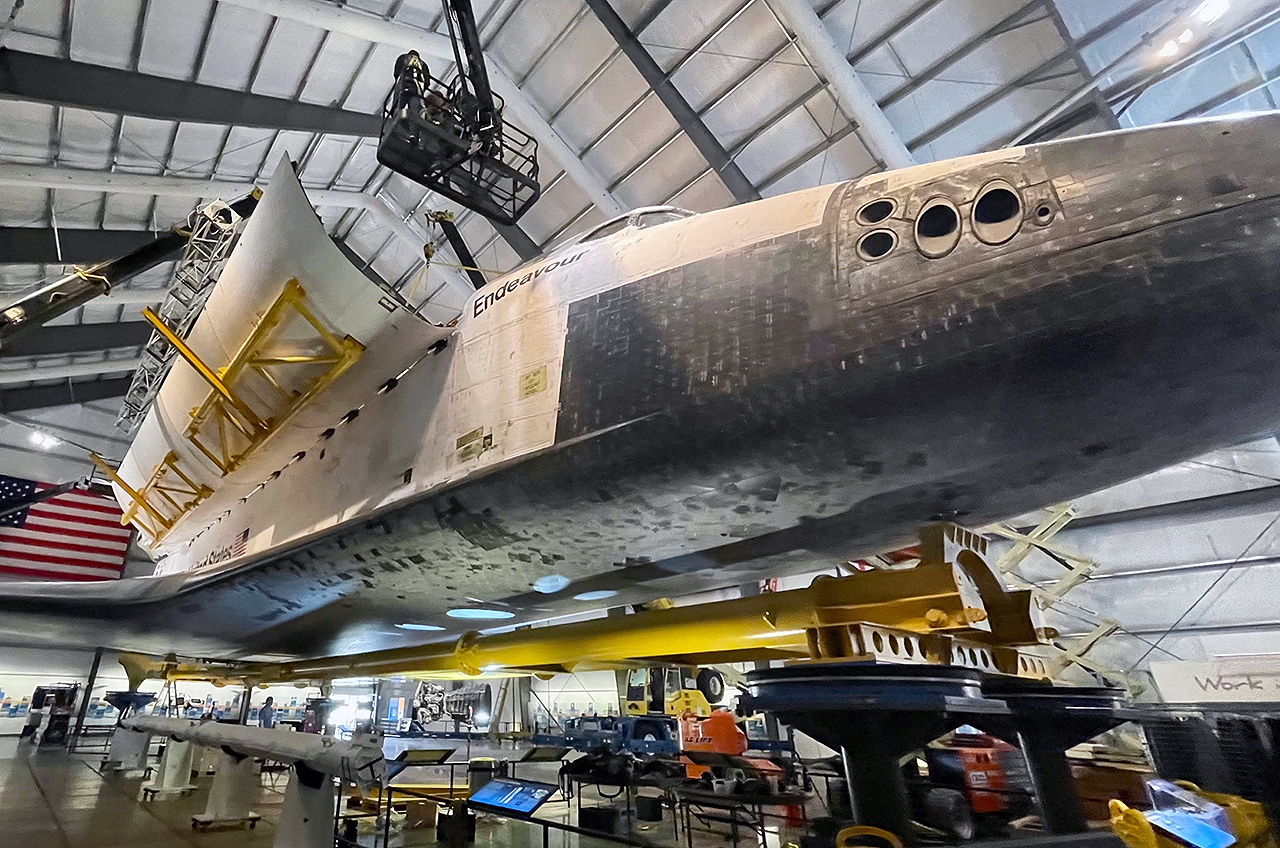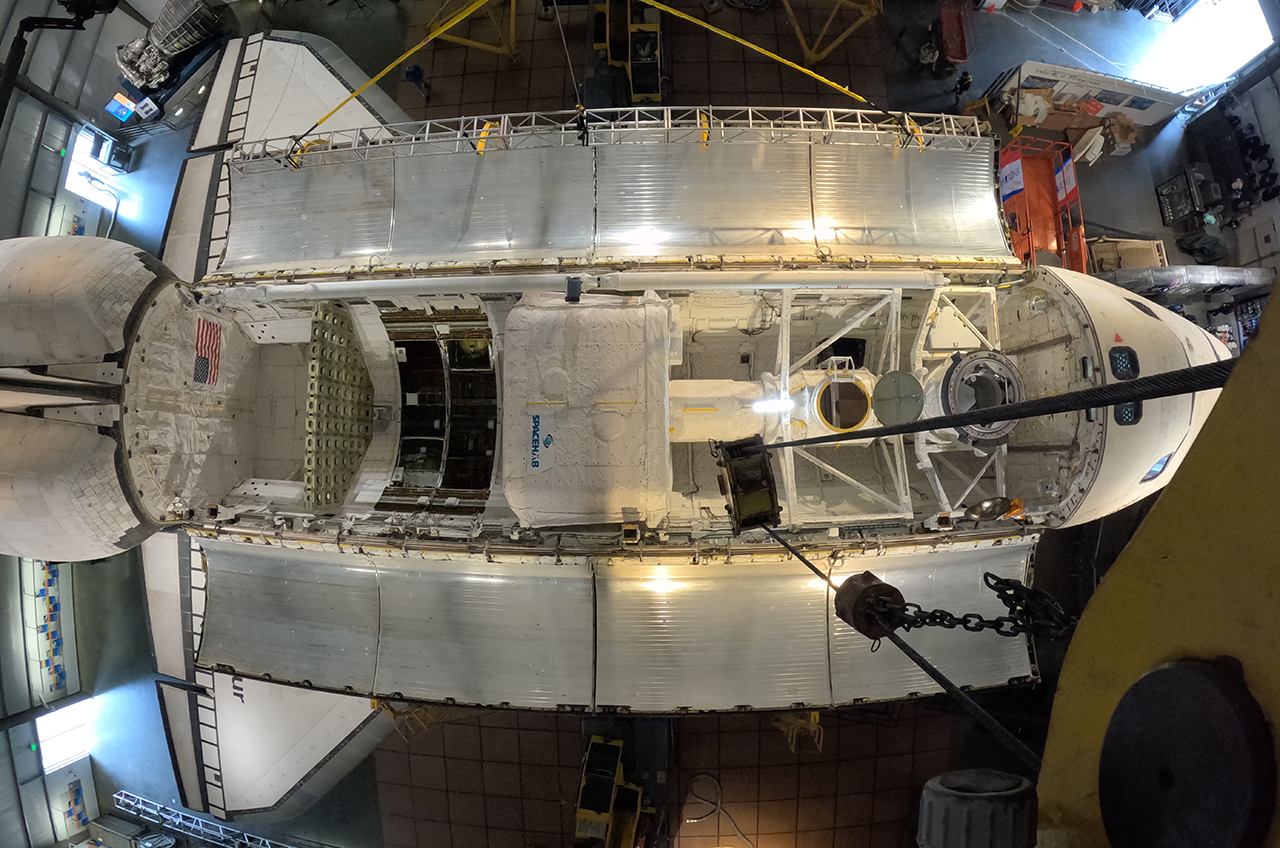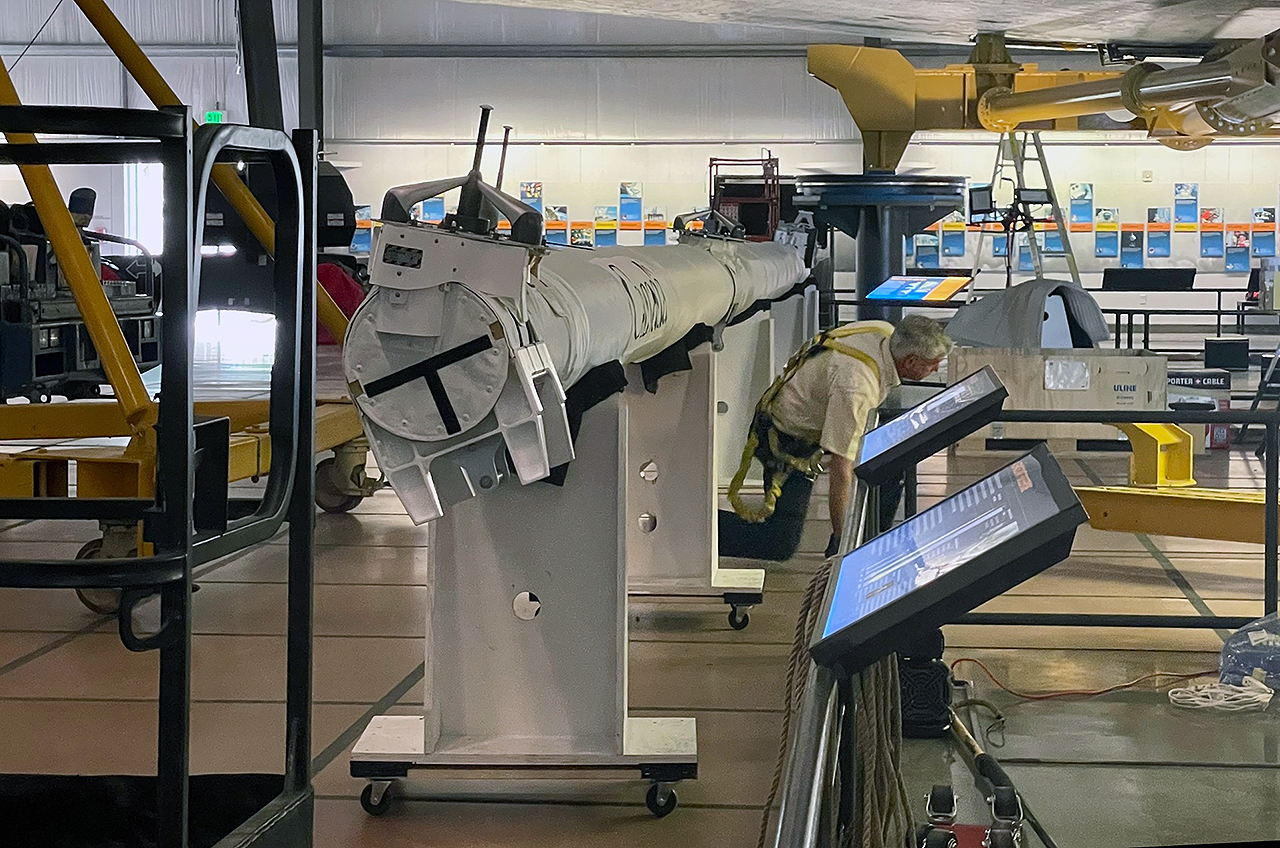California Science Center reopens retired space shuttle Endeavour's payload bay
Last major piece being installed before the winged spacecraft goes vertical later this year.

Space shuttle Endeavour is about to get its 'boom' back.
No, the California Science Center is not planning to reignite the retired spacecraft, which since 2012 has been on display at the Los Angeles institution. Despite the work now underway to exhibit Endeavour in a vertical, launchpad-like display, the center's plans call for the space shuttle to remain quiet.
Rather, the orbiter's payload bay has been reopened for the first time in nine years to complete outfitting the vehicle's cargo hold.
"We are installing a replica Orbiter Boom Sensor System [OBSS]," said Dennis Jenkins, director of the California Science Center's project to display Endeavour. "At the time of the original [payload] installation, we were not certain this item would be visible to guests in the final configuration. A detailed evaluation at the end of the 2014 installation showed it would be, so we decided to add the OBSS to provide an authentic representation of the STS-118 payload configuration."
Related: NASA's Space Shuttles: Where Are They Now?

In a much more publicized move almost a decade ago, the science center pulled open Endeavour's two 60-foot-long (18-meter) doors in an event that was called "Go for Payload." Over the course of three weeks in October 2014, engineers and curators used large cranes to load the shuttle's empty bay with a flown Spacehab logistics module and replica components modeled after how Endeavour looked on its 20th mission, STS-118, in 2007.
STS-118 was chosen because that flight included educator-astronaut Barbara Morgan on its crew and the California Science Center is focused on education.
Get the Space.com Newsletter
Breaking space news, the latest updates on rocket launches, skywatching events and more!
Later this year, Endeavour will be transported from its pavilion to the construction site of its new home, the Samuel Oschin Air and Space Center. There, the orbiter will be mated with NASA's last remaining, built-for-flight external fuel tank and two solid rocket boosters assembled from previously launched parts.
Once completed, the exhibit will feature the world's only indoor display of a full space shuttle stack. Endeavour will appear as it did on the launchpad with one exception: one of its payload bay doors will be open, allowing guests to see the equipment inside.
Hence the need for the OBSS.
Related: NASA's space shuttle Endeavour: 6 surprising facts

Introduced as a safety measure after the loss of space shuttle Columbia in 2003, the OBSS was a 50-foot-long (15.24-m), camera-and-laser-tipped extension to the Canadarm robotic arm. Astronauts used the boom to inspect the orbiter's wings and underbelly to ensure they were not damaged during launch or while in space.
When not in use, the OBSS was stored on the starboard, or right-side sill of the payload bay. In Endeavour's exhibit, the boom will covered by the still closed starboard-side door, but depending on where visitors are standing, they might still be able to see where it should be mounted inside.
With the shuttle fleet retired since 2011, the ideal addition for Endeavour's display would be the real OBSS. It, however, is out of reach.
"The OBSS usually used by Endeavour was left at the ISS," Jenkins said.
On Endeavour's last mission, the boom was removed and stowed outside of the International Space Station. Though its sensors are long dead, the OBSS could be used to augment the station's Canadarm2 robotic arm in order to reach areas the arm alone cannot.

The installation of the replica OBSS is expected to take a few days, with the payload bay set to be closed by the end of the week. After that, Endeavour will almost be ready to go vertical.
"For the most part, Endeavour is ready," said Jenkins. "We are planning on changing out some of the LED lighting since that technology has improved considerably in he past nine years. Just before we stack we will need to change out the attach bolts — the bolts holding the ship to the overland transporters are smaller than the flight bolts that attach to the external tank — and do a final foreign object debris check."
As for Endeavour's new home, it too is on track for the orbiter to arrive.
"Construction is proceeding on schedule," Jeffrey Rudolph, president and chief executive officer of the California Science Center, told collectSPACE.com. "It is exciting to witness the new Samuel Oschin Air and Space Center take shape."
See more photographs of Endeavour's open payload bay at collectSPACE.
Follow collectSPACE.com on Facebook and on Twitter at @collectSPACE. Copyright 2023 collectSPACE.com. All rights reserved.
Join our Space Forums to keep talking space on the latest missions, night sky and more! And if you have a news tip, correction or comment, let us know at: community@space.com.

Robert Pearlman is a space historian, journalist and the founder and editor of collectSPACE.com, a daily news publication and community devoted to space history with a particular focus on how and where space exploration intersects with pop culture. Pearlman is also a contributing writer for Space.com and co-author of "Space Stations: The Art, Science, and Reality of Working in Space” published by Smithsonian Books in 2018.In 2009, he was inducted into the U.S. Space Camp Hall of Fame in Huntsville, Alabama. In 2021, he was honored by the American Astronautical Society with the Ordway Award for Sustained Excellence in Spaceflight History. In 2023, the National Space Club Florida Committee recognized Pearlman with the Kolcum News and Communications Award for excellence in telling the space story along the Space Coast and throughout the world.










